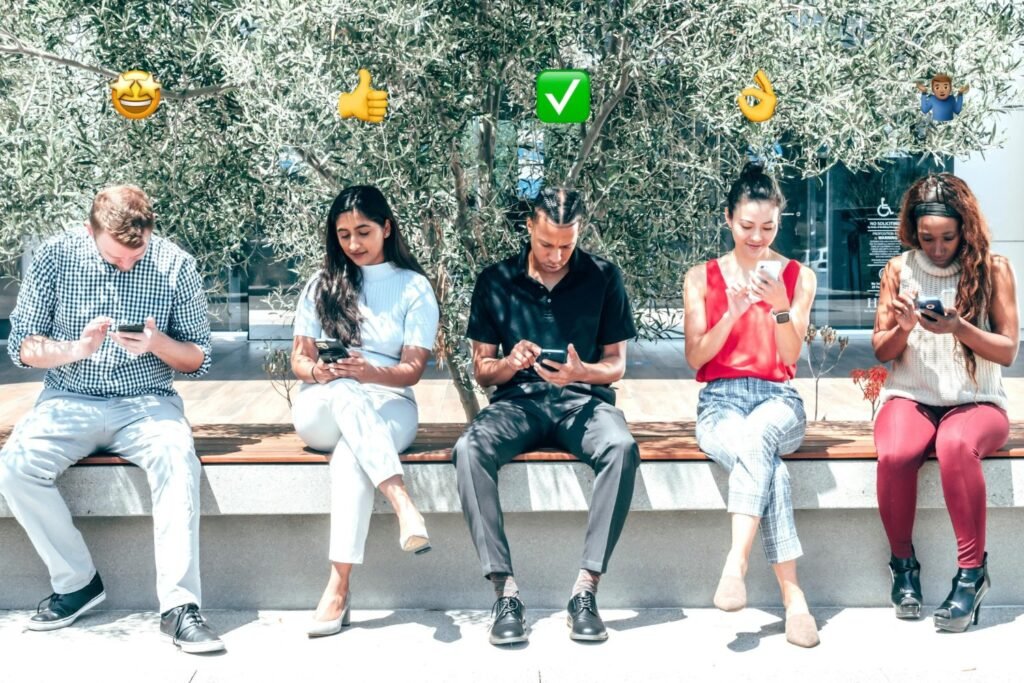The Insights Revealed by Your Emojis (Even if You Were Unaware)

In a world where a large part of our communication happens in writing and through screens, understanding each other becomes a challenge. Words, without tone or gestures, can be prone to misunderstandings. But something seemingly trivial came to save us: emojis. These small visual symbols not only complement what we say but also reveal emotions, intentions, and even who we are. What role do they really play in our way of communicating?
## A need that goes way back
Although it may seem recent, the intention to mark the nuances of written language has centuries of history. As far back as 1668, English thinker John Wilkins proposed a special symbol to indicate irony in texts: the same inverted exclamation mark that we see at the beginning of sentences in Spanish today. Two centuries later, Alcanter de Brahm devised a similar symbol, and in 1982, researcher Scott Fahlman suggested using 🙂 to avoid misunderstandings after a failed joke in an academic forum.
This need to express the non-literal—such as irony or—through graphic means persists to this day, and is precisely one of the main functions of emojis. Far from being mere adornments, these pictograms clarify the meaning of what we write and help the recipient better understand our message. Ultimately, they fill in the gaps of digital communication, where there is no tone of voice, looks, or gestures.
### More than just faces: the origin of emojis
The word “emoji” comes from Japanese and can be translated as “picture character.” Although many believe they were born in 1999 with the Japanese Shigetaka Kurita, the truth is that there were already versions in black and white on previous devices. For example, the Sharp PA-8500 model from 1988 had icons like broken hearts, airplanes, and smiling faces.
The early emergence of emojis in Japan is not a coincidence. The Japanese language uses ideograms, and their visual culture — influenced by manga, anime, and kawaii — facilitated their early integration. In the West, emojis only arrived in 2009 when Apple sought to adapt to the Japanese market, where a phone without emojis simply had no place.
### How do we interpret messages with emojis?
Emojis serve multiple communicative functions. They express emotions, yes, but they also indicate conversational breaks, informality, emphasis, or context. A simple “thank you” does not convey the same message as “thank you 🥰”, and “how sad 😂” can imply the opposite if accompanied by the laughing emoji.
Among them, 😂 (face with tears of joy) stands out, chosen as Word of the Year in 2015 by the Oxford dictionary. Its success is so resounding that it was briefly surpassed in 2021 by 😭 (intense crying) on Twitter. However, its hegemony is being challenged by young people, who have adopted 💀 (skull) to express extreme laughter, as if they were literally “dying of laughter.”
This change shows how emojis also function as codes within social groups. Just as teenagers choose new expressions to differentiate themselves, they also do so with their pictograms.
Some of these uses have generated controversy. For example, certain groups like the incels use the bean 🧄 emoji as an internal mark. But these phenomena are less a problem of language than of the social environments that produce them.
Instead of blaming emojis, perhaps we should look beyond. Linguistic change is a constant, and teenagers have always sought their own ways of communicating. What is an emoji today, was slang yesterday; tomorrow, who knows.
A Visual Solution to the Age-Old Problem of Understanding
The Evolution of Emojis in Digital Interaction
In digital interaction, emojis provide what words alone cannot offer: emotional clarity, context, and a bridge between sender and receiver. As long as they remain useful, they will continue to evolve. And even though we may someday abandon them, today they help us bridge the invisible distance between what we say and what we truly mean.
Source:




